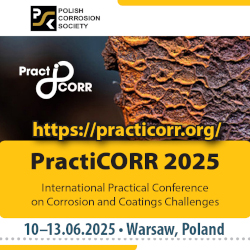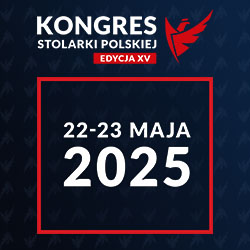Open Access (Artykuł w pliku PDF)
The influence of the mineral wool insulation dimensions on the fire resistance of steel pipe penetration seals in vertical fire partitions
dr inż. Bartłomiej Sędłak, Instytut Techniki Budowlanej, Zakład Badań Ogniowych
ORCID: 0000-0002-4715-6438
dr inż. Paweł Sulik, Instytut Techniki Budowlanej, Zakład Badań Ogniowych
ORCID: 0000-0001-8050-8194
Adres do korespondencji: Ten adres pocztowy jest chroniony przed spamowaniem. Aby go zobaczyć, konieczne jest włączenie w przeglądarce obsługi JavaScript.
DOI: 10.15199/33.2024.01.03
Doniesienie naukowe
Streszczenie. W artykule zaprezentowano badanie dotyczące odporności ogniowej uszczelnień przejść instalacyjnych stalowych rur o trzech różnych średnicach (od 60,3 do 168,3 mm), zabezpieczonych jednym rodzajem wełny mineralnej w różnych konfiguracjach grubości oraz długości izolacji. Wszystkie z przebadanych próbek zachowały szczelność ogniową przez 240min. Izolacyjność ogniowa zmieniała się w zależności od średnicy rury oraz wymiarów zastosowanej izolacji. Analiza uzyskanych wyników badań wykazała, że długość zastosowanej izolacji wpływa przede wszystkim na przyrost temperatury mierzonej na rurze, natomiast grubość izolacji jest kluczowym czynnikiem wpływającym na przyrost temperatury rejestrowany na powierzchni wełny mineralnej.
Słowa kluczowe: uszczelnienia przejść instalacyjnych; odporność ogniowa; izolacyjność ogniowa; szczelność ogniowa; rury stalowe; wełna mineralna.
Abstract. In this article presented fire resistance test of penetrations of steel pipes with three different diameters (ranging from60.3mmto 168.3mm) protected by a single type ofmineral wool in various configurations of insulation thickness and length was conducted. The tested samplesmaintained their fire integrity for 240 minutes. The fire insulation varied depending on the pipe diameter and the dimensions of the insulation used. An analysis of the results showed that the length of the insulation primarily affected the temperature rise measured on the pipe, while the thickness of the insulation was a key factor influencing the temperature rise recorded on the surface of the mineral wool.
Keywords: penetration seals; fire resistance; fire insulation; fire integrity; steel pipes; mineral wool.
Literatura
[1] Fejfer Ł, Sulik P. Wymagania dotyczące bezpieczeństwa pożarowego przejść instalacyjnych. Materiały Budowlane. 2018; DOI: 10.15199/33.2018.06.15.
[2] Sędłak B, Sulik P, Izydorczyk D, Łukomski M. Fire-stop Wraps and Collars with Intumescent Materials-Performance Comparison, in Procedia Engineering. 2017; DOI: 10.1016/j.proeng.2017.02.113.
[3] Sędłak B, Sulik P. Badania odporności ogniowej dużych mieszanych uszczelnień przejść instalacyjnych. Matereriały Budowlane. 2014; no. 7: 20 – 22.
[4] Sulik P, Śmigielski N. Zdolność izolowania temperatur pożarowych w zależności od gęstości i grubości wełny mineralnej. Izolacje. 2021; vol. 11/12.
[5] Sulik P. Wpływ wybranych parametrów wełny mineralnej na bezpieczeństwo pożarowe elewacji wentylowanych. Materiały Budowlane. 2021; nr 7: 20 – 22.
[6] Andersen FMB, Dyrboel S. Modelling radiative heat transfer in fibrous materials: the use of Planck mean properties compared to spectral and flux-weighted properties. J Quant Spectrosc Radiat Transf. 1998; 60 (4): 593 – 603.
[7] Andres B, Livkiss K, Hidalgo JP, van Hees P, Bisby L, Johansson N, Bhargava A. Response of stone wool–insulated building barriers under severe heating exposures. J Fire Sci. 2018; 36 (4): 315 – 341.
[8] Karamanos A, Papadopoulos A, Anastasellos D (2004) Heat transfer phenomena in fibrous insulating materials. Proc IASME/WSEAS Int Conf Heat Mass Transf 2004: 7.
[9] KrasnovskihMP,Maksimovich NG,VaismanYI, KetovAA(2014) Thermal stability ofmineral-wool heat-insulatingmaterials. Russ JAppl Chem87 (10): 1430–1434.
[10] Veiseh S, Hakkaki-FardA(2009) Numerical modeling of combined radiation and conduction heat transfer inmineral wool insulations. Heat Transf Eng 30 (6): 477–486.
[11] Andres B, Livkiss K, Hidalgo JP, van Hees P, Bisby L, Johansson N, Bhargava A (2018) Response of stone wool–insulated building barriers under severe heating exposures. J Fire Sci 36 (4): 315–341.
[12] Grinchuk PS. Contact heat conductivity under conditions of high-temperature heat transfer in fibrous heat-insulating materials. J Eng Phys Thermophys. 2014; 87 (2): 481–488.
[13] Krasnovskih MP, Maksimovich NG, Vaisman YI, Ketov AA (2014) Thermal stability of mineral-wool heat-insulating materials. Russ J Appl Chem. 2014; 87 (10): 1430 – 1434.
[14] Livkiss K,Andres B, BhargavaA, van Hees P. Characterization of stone wool properties for fire safety engineering calculations. J Fire Sci. 2018; 36 (3): 202 – 223.
[15] Livkiss K,Andres B, Johansson N, van Hees P. Uncertainties in modelling heat transfer in fire resistance tests: a case study of stone wool sandwich panels. Fire Mater. 2017; 41 (7): 799 – 807.
[16] Paudel D, Rinta-Paavola A, Mattila HP, Hostikka S. (2020) Multiphysics Modelling of Stone Wool Fire Resistance, Fire Technology. 2020; https://doi. org/10.1007/s10694-020-01050-5.
Przyjęto do druku: 02.01.2024 r.
Materiały Budowlane 1/2024, strona 11-16 (spis treści >>)






























